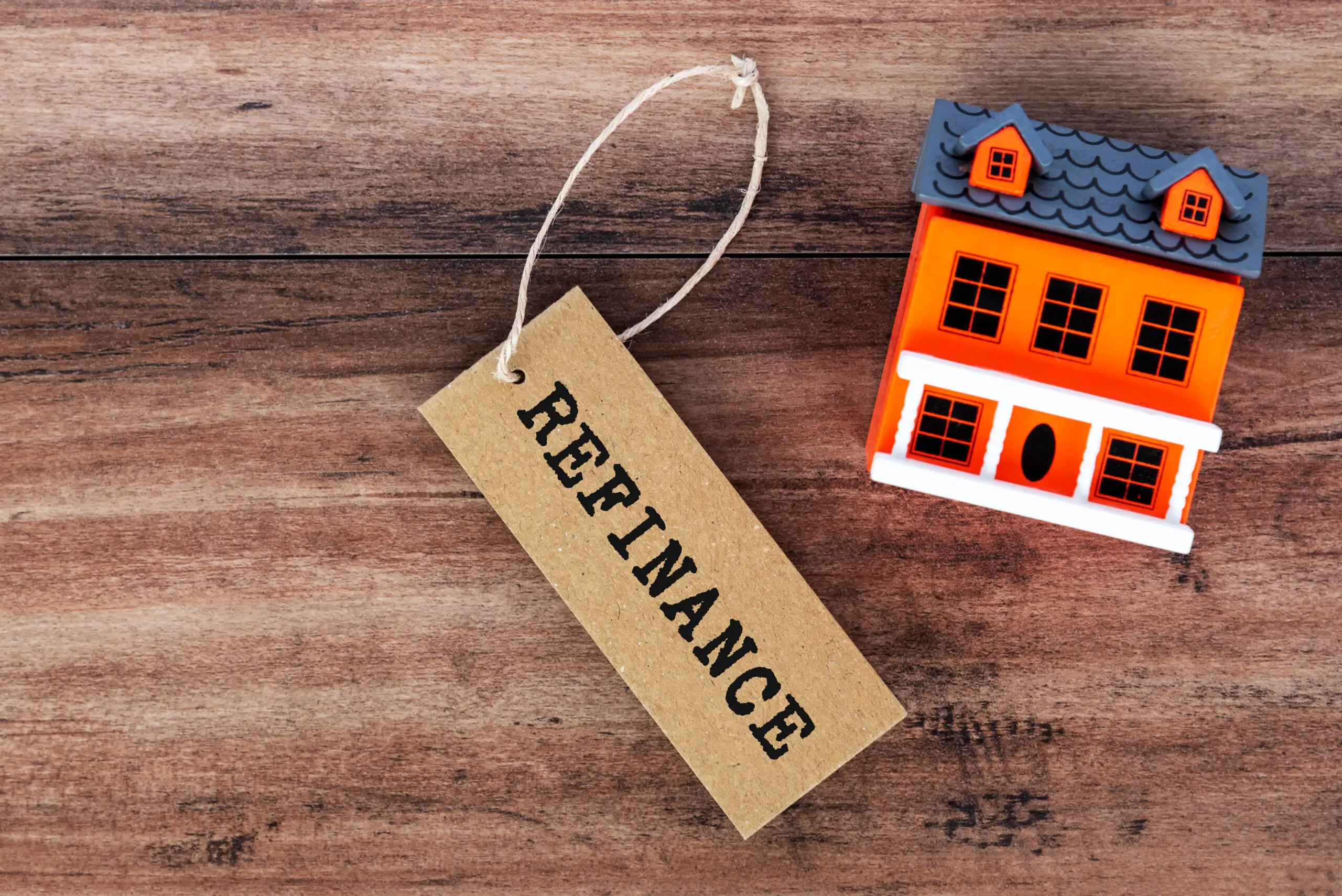When Should You Refinance Your Mortgage?


Kim Porter
Contributor
Kim is a freelance contributor to Newsweek’s personal finance team. She began her career on the Bankrate copy desk in 2010, worked as a managing editor at Macmillan and went full-time freelance in 2018. Since then, she’s written for dozens of publications including U.S. News & World Report, USA Today, Credit Karma, AARP The Magazine and more. She loves spending her free time reading, running, baking and hanging out with her family.


John Egan
Banking Expert
John is a freelance writer for Newsweek’s personal finance team. He has contributed personal finance articles to outlets such as Forbes Advisor, Investopedia, Bankrate, USA Today Blueprint, Capital One, Experian and NJ.com. John, based in Austin, Texas, is the author of The Stripped-Down Guide to Content Marketing.
Updated October 31, 2024 at 4:34 pm

Homeowners often consider refinancing when mortgage rates dip, but there are many reasons to swap out one home loan for another. So, when should you refinance your mortgage? It can be a good idea if you can save money, free up money in your budget or address another issue.
Here’s a look at when you should refinance and when you should hold off.
Our research is designed to provide you with a comprehensive understanding of personal finance services and products that best suit your needs. To help you in the decision-making process, our expert contributors compare common preferences and potential pain points, such as affordability, accessibility, and credibility.
Vault’s Viewpoint on the Perfect Time to Refinance Your Mortgage
- Many homeowners refinance if they qualify for a lower interest rate than the one they’re paying now.
- Refinances come with closing costs, so you’ll need to calculate your break-even point and consider whether the costs are worth it.
- You may decide to refinance for other reasons, such as to extend your loan term, remove another borrower from the loan or remove mortgage insurance.
What Is a Mortgage Refinance?
When you refinance, you take out a new mortgage that pays off your current home loan. You can refinance with the same lender that originated your current loan, or you can explore refinancing with a different lender. The underwriting process includes a credit check, home appraisal and income review.
The costs to refinance vary by lender and the amount you’re refinancing, but you can typically expect to pay 2% to 6% of the loan amount. The national average closing costs for a single-family home are $4,243, according to a study published in January 2024 by Assurance IQ.
From beginning to end, the refinancing process takes about 30 to 45 days to complete, although the exact timeline depends on your situation, the lender and the type of loan you take out. Once the process is finished, you’ll pay down the new loan over time.
When You Should Consider Refinancing
Before refinancing, it’s important to settle on an objective. Here are some of the common reasons to refinance a mortgage and when it could work in your favor.
You Can Lower Your Interest Rate
If you qualify for a lower interest rate than what you’re paying now, a rate-and-term refinance can help you save money each month. Borrowers typically do this when rates drop. But you might also gain a low interest rate if your credit score or debt-to-income ratio has improved substantially since taking out the loan. The best rates usually go to borrowers with credit scores around 740 and above.
You may need to pay closing costs when refinancing, so calculate your break-even point to see whether the new loan is worthwhile. For instance, if you pay $3,000 to refinance and save $200 a month, then it’ll take 15 months to recoup your costs. The refinance could make sense if you plan to stay in your home longer than that.
You Want to Lower Your Monthly Payments
It’s also possible to lower your monthly housing payment by extending the loan term. Repaying the money over a longer period will spread out the debt and reduce the principal and interest payments you make each month.
For instance, let’s say you bought a home for $500,000 with a 15-year term, 20% down payment and 7% interest rate. Your principal-and-interest payments would cost $3,595 each month. Moving to a 30-year loan term with the same interest rate would lower your payments to $2,661.
But consider the trade-offs. You’ll put more breathing room in your budget, but you’ll pay more interest over the long term. If you go this route, consider paying more toward the principal when you can afford to.
You Want to Change Your Rate Type
When you took out a home loan, you may have chosen an adjustable-rate mortgage (ARM). These mortgages usually offer low rates for a fixed period, such as five years. After that period ends, the rate can go up at set intervals, typically once a year. If the fixed period on your mortgage expires and the rate is climbing, you may decide to refinance into a fixed-rate loan. Your monthly payments would become predictable for the remaining loan term.
You Want to Borrow Cash
A cash-out refinance lets you take out a new mortgage for more than you currently owe, pay off the old loan and keep the difference in cash. You can use the money for any purpose, but your monthly housing payments will rise because you’re borrowing more money.
The new mortgage also comes with a new interest rate and loan term. Rates on cash-out refinances are usually higher than those for rate-and-term refinances. But it still may be a cheaper way to borrow money compared with some other loans, such as credit cards and personal loans.
You Can Drop Mortgage Insurance
If you take out a conventional mortgage and put down less than 20%, you might have to pay for monthly private mortgage insurance (PMI). Because your lender checks the current appraised value of your home, refinancing may help you shed the PMI premium if you’ve built at least 20% equity.
To estimate your equity, take your home’s current market value and subtract your mortgage balance. For instance, a home with a value of $500,000 and loan balance of $400,000 means you own $100,000 in equity. In this case, you’ve got 20% equity and can take out the new loan without paying for PMI.
You’re Adding or Removing a Borrower
If you took out a home loan with a partner and then split up, you’ll need to figure out who will stay in the home and shoulder the mortgage payments. The other person should be removed from the loan because they’re no longer making payments.
Refinancing is typically the easiest way to remove a co-borrower from a home loan (whether you do a rate-and-term or cash-out refi loan). The person taking over the loan will need to qualify for it based solely on their income. Similarly, you can add a borrower to the loan through the same transaction.
You’re Changing the Loan Type
You might also decide to switch from one mortgage program to another if you stand to benefit.
For instance, you can refinance an FHA loan into a conventional loan to remove the annual mortgage insurance premium (MIP). Most FHA loans come with mortgage insurance for the life of the loan when the down payment is under 10%. But if you’ve built at least 20% equity in the home, you can refinance into a conventional mortgage and pay no mortgage insurance. However, you’ll need to qualify for the new loan.
When You Should Wait to Refinance
Refinancing isn’t right for every homeowner. Here are some instances when not refinancing could be the better move.
You’re Shortening the Loan Term
It’s possible to refinance from a 30-year loan into a 15-year loan to speed up your repayment timeline. You’ll also save substantially on interest costs, since interest rates on 15-year mortgages are often lower compared with longer-term loans, and more of your payments go toward the principal each month.
However, you’ll be locked into higher monthly payments for the remaining term (unless you refinance again). This could squeeze your budget and potentially cause you to default. Instead of shortening the loan term, you could simply pay more toward the principal each month.
You’re Substantially Extending the Loan Term
On the other hand, lengthening the loan term too much can drastically bump up your interest costs and keep you in debt longer. For instance, this could happen if you’re a decade into a 30-year mortgage and you refinance into a new 30-year loan.
You Plan to Sell Your Home Soon
If you plan to sell your home within the next two years or so, a refinance might not be worth the time and money. You likely won’t have enough time to recoup the refinancing costs.
How Soon Can You Refinance a Mortgage?
How soon you can refinance your mortgage depends on the type of loan you have, the loan you’d like to take out and the lender’s requirements.
- Conventional loan: You can typically do a rate-and-term refinance into a new conventional loan as soon as you’d like. If your lender requires you to wait a certain period of time, get around the rule by refinancing with another lender. But doing a cash-out refi usually requires you to wait at least six months after getting the primary mortgage.
- FHA loans: These mortgages, guaranteed by the Federal Housing Administration, require borrowers to wait at least 210 days after closing on the first loan before doing a refinance.
- VA loans: Mortgages backed by the U.S. Department of Veterans Affairs (VA loans) require you to wait either 210 days after closing or after making six consecutive payments, whichever is longer.
- USDA loans: If your mortgage is guaranteed by the U.S. Department of Agriculture (USDA loan), you’ll need to make consecutive, on-time payments for 180 days before refinancing. And you’ll need to wait at least 12 months before applying for the USDA Streamline refinancing program.
Frequently Asked Questions
At What Point Is It Worth It to Refinance?
It depends on the borrower’s goals. A refinance could be worth it if it can help you get ahead. For instance, if you’re refinancing to save money, you can calculate your break-even point to determine when you’d recoup your costs.
How Many Years Should I Wait to Refinance My Mortgage?
You can do a rate-and-term refinance on a conventional loan anytime after closing. FHA and VA loans generally require you to wait at least 210 days, while the window of time for USDA loans is 12 months.
Is It a Good Idea to Refinance at a Higher Rate?
While many borrowers refinance to score a lower rate and save money, getting a higher rate on a new mortgage is possible. Some borrowers take this action if they need to remove a co-borrower, shift from an ARM to a fixed-rate loan or switch loan types.
What Credit Score Do You Need to Refinance a Mortgage?
When looking to refinance, borrowers should usually have at least a 620 credit score, though some mortgage loan types explicitly geared toward people with bad credit may accept lower scores. The higher your score is, the more likely you are to get a more favorable rate, so try to save the opportunity to refinance for a time when your score is doing well.
Editorial Disclosure: We may receive a commission from affiliate partner links included on our site. However, this does not impact our staffs’ opinions or assessments.

Kim Porter
Contributor
Kim is a freelance contributor to Newsweek’s personal finance team. She began her career on the Bankrate copy desk in 2010, worked as a managing editor at Macmillan and went full-time freelance in 2018. Since then, she’s written for dozens of publications including U.S. News & World Report, USA Today, Credit Karma, AARP The Magazine and more. She loves spending her free time reading, running, baking and hanging out with her family.